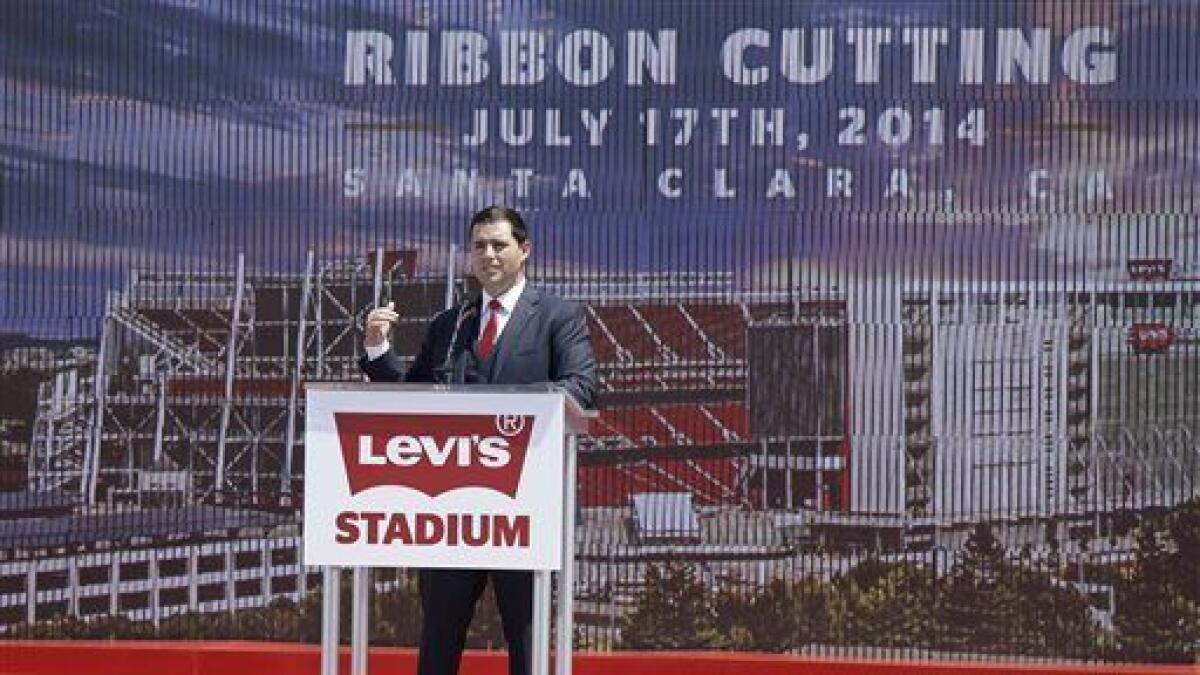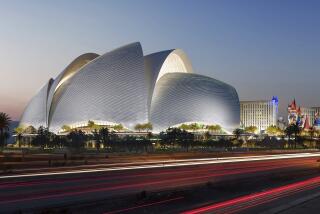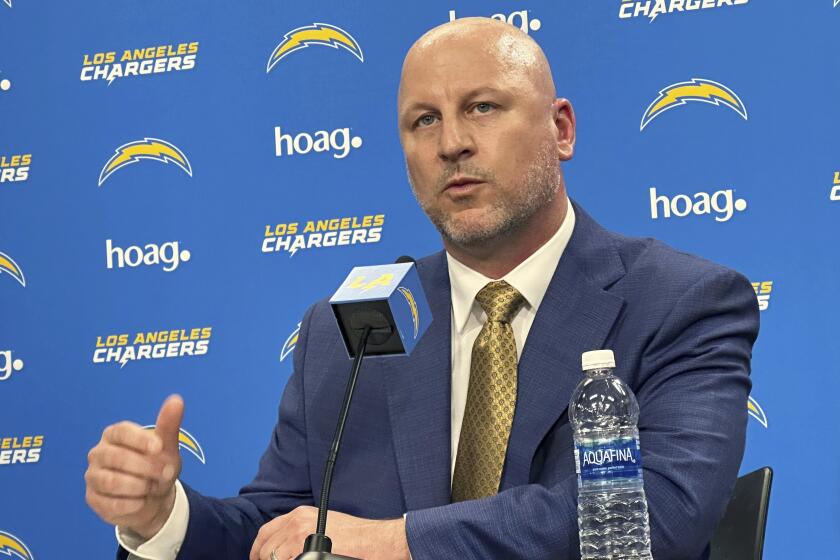Column: A stunning tax ruling favoring the 49ers reminds us of the folly of public football stadiums

The question of whether publicly financed football stadiums are a boon or a bust for their local communities has been debated for years, with learned opinion tending toward the latter.
In Santa Clara County, the debate is over: Levi’s Stadium, a $1.3-billion edifice opened in 2014 to house the NFL’s San Francisco 49ers, looks like a bust, big time.
That’s because a county Assessment Appeals Board just gave the team a $36-million tax win — money that will come out of the pockets of the county, local school boards and other local jurisdictions that receive property taxes from the team.
We think the appeals board got so frustrated that they split the baby, 50-50. I think they just threw up their hands.
— Santa Clara County Assessor Lawrence Stone
The board’s ruling means that the localities will have to refund $36 million to the team by June 30 and receive $6 million a year less from the team going forward. The biggest hit is to the Santa Clara Unified School District, which will have to refund $13.1 million. That’s out of a budget of about $230 million.
In a message to the taxing entities on Wednesday, County Assessor Lawrence Stone called the ruling issued that day “shocking and unexpected.”
The team, needless to say, came to the opposite conclusion. “We accept the decision of the Assessment Appeals Board, and will cooperate fully with the Assessor’s Office,” a team spokesman told me.
The tax blow is another indication of how stadiums can be oversold as municipal assets. Not only are their effects on the local economy generally vastly overstated, but the very principle of expecting taxpayers to help finance a facility for National Football League teams that typically are owned by billionaires is just bizarre. That’s the case with the 49ers team, which is owned by the York family, who are related to the DeBartolos, the billionaires who were long-term owners; current CEO Jed York is the nephew of Edward DeBartolo Jr., who ceded the team to his sister Denise DeBartolo York in 2000 after he ran into legal trouble.
Team owners love to swank around as though they’re stewards of community adornments, but there’s a point at which money talks and the public interest walks. Let’s not forget that the 49ers still carry the name of San Francisco, which they abandoned in 2014 for Santa Clara, 40 miles south. Or that the two NFL jewels in Los Angeles are new imports from elsewhere — the Rams from St. Louis, to which they decamped from L.A. in 1995, and the Chargers from San Diego. The warning to Inglewood, where the Rams and Chargers will play in a new stadium, is: Beware.
The same impulse to maximize financial return is what underlies the 49ers assessment appeal.
The team’s case turned on an obscure provision of assessment law known as “possessory interest.” Since Levi’s Stadium is jointly operated by the team and the public — through the city of Santa Clara — the question before the board was how to divide the economic value between the private and public entities. In technical terms, the public and the team each “possess” the stadium for six months of the year, with the team’s possession coinciding with the football season.
The county’s position was that virtually all the benefit flowed to the team, which controls event bookings at Levi’s, as well as the income from luxury suite rentals, year round. (The city takes concession and ticket revenues for non-football events.) Assessor Stone argued that the mismatch in value was similar to that of, say, a ski resort, where the property is vastly more valuable during the ski season than during the summer.
The assessment appeals board, however, agreed with the team that the value was equal between the football and non-football season. As a result, the county, school districts, and other public entities have to return to the team half of the taxes they’ve received in recent years.
Stone says he thinks the appeals board was flummoxed by the sheer complexity of the team’s arrangements for control of the stadium, which it exercises through a mind-boggling complex of subsidiaries. The case required 21 daylong hearings, he says.
“We think the appeals board got so frustrated that they split the baby, 50-50,” Stone told me. “I think they just threw up their hands.”
This isn’t the first time that the locals have discovered that a big stadium is a mixed curse, at best. The city of Santa Clara, where Levi’s Stadium is located, has been in several fights with the team over the facility.
The battles started just as the stadium opened for business. The issue then was a municipal park with several soccer fields located in the shadow of the new stadium. The 49ers offered the city $15 million to take over the field, which the team wanted for parking and commercial development. After protests by soccer families that the offer was a low-ball figure, the team withdrew it.
Over the following years, the team and city seemed locked in a permanent war over rent for the stadium. The team’s demand for a rent reduction eventually went to an arbitrator, who ruled last August that the team actually should pay more — raising the rent to $24.7 million a year, an increase of $262,000.
On the tax issue, the assessment appeals board ruling is subject to appeal to Santa Clara County Superior Court, but Stone says he hasn’t decided whether to take that step. In the meantime, the localities surrounding the stadium will have to dip into their pockets to pay the refunds.
Keep up to date with Michael Hiltzik. Follow @hiltzikm on Twitter, see his Facebook page, or email [email protected].
Return to Michael Hiltzik’s blog.
More to Read
Go beyond the scoreboard
Get the latest on L.A.'s teams in the daily Sports Report newsletter.
You may occasionally receive promotional content from the Los Angeles Times.











